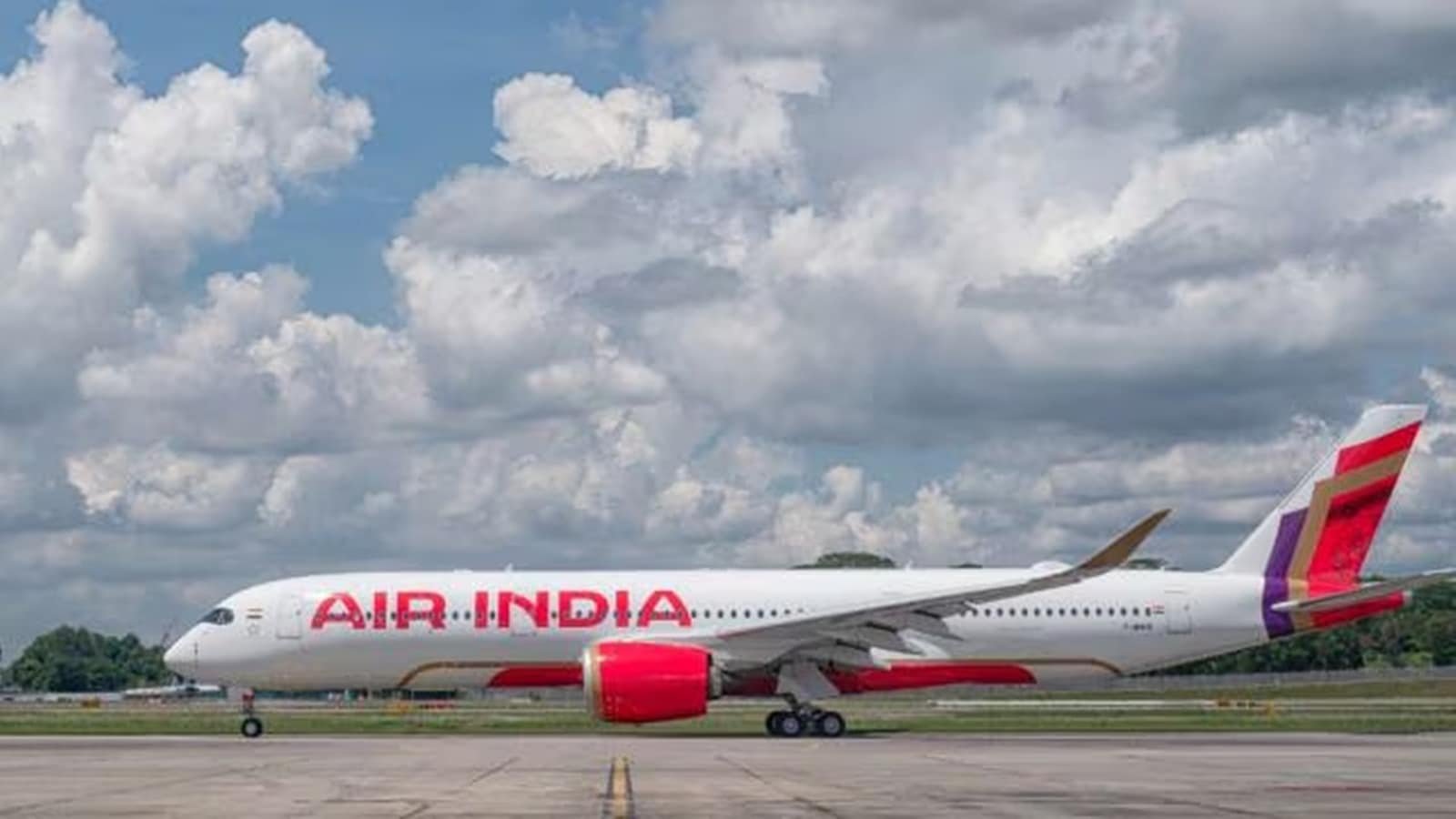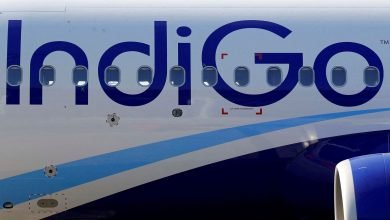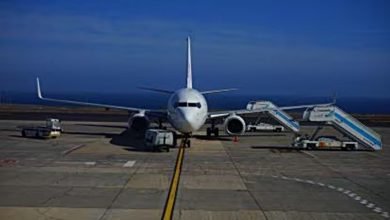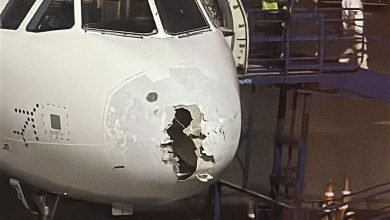Air India aspires to double its international connecting traffic in 3 years, bets big on premium classes | Business News

Air India views international-to-international (I-to-I) transit passenger traffic—or connecting at Indian airports passengers flying from one foreign country to another—as a huge growth opportunity and has been actively strategising and taking steps to attract more transit passengers on its international flights. According to the airline’s chief commercial officer Nipun Aggarwal, the efforts, which include network expansion and realignment at the Air India group level and tweaking flight schedules to facilitate better flight connections, have started bearing fruit.
“Almost 10 per cent of the traffic that we carry on our long-haul, wide-body aircraft is now I-to-I traffic. And the D-to-I (domestic-to-international) traffic would be almost 40 per cent, and the balance 50 per cent is point-to-point traffic…(when the Tata group took over Air India in January 2022) this (I-to-I traffic) must have been very low…the numbers were not meaningful for us to track,” Aggarwal said in a recent interaction with reporters, adding that he expects the I-to-I traffic share to double to 20 per cent over the next three years.
Aggarwal also said that Air India has also seen growing demand and revenue in premium seats—business class and premium economy class—and has decided to double the premium seats on its legacy wide-body aircraft as part of the cabin retrofit programme, which is slated to start in the second half of this year. Air India is already in the process of adding premium economy seats to its legacy narrow-body aircraft, which so far had a standard two-class configuration—business and economy. The airline is also developing a first-class product, which will be deployed on some of its future Airbus A350-1000 wide-body jets for select long-haul routes.
I-to-I opportunity
Currently, around 10 per cent of passengers on Air India’s US and Australia flights are I-to-I transfer passengers. The share is higher for flights to the UK (around 15 per cent), and Europe (around 20 per cent).
According to Aggarwal, the I-to-I market size overflying India was estimated at 130 million passengers as of 2023-24, but India’s largest airport—Delhi—accounted for less than 1 per cent of this, while mega hubs Dubai and Doha accounted for 10 per cent and 7.5 per cent, respectively. Key international corridors that overfly India include Australia and New Zealand to Europe, Europe-Southeast Asia and South Asia, North America-Southeast Asia, and Middle East-South Asia.
This I-to-I opportunity is a key consideration in the Air India group network development. In the international market, Air India will focus on medium- and long-haul routes, along with some short-haul routes where there is sufficient demand for a full-service product, while other short-haul routes will be serviced by Air India Express.
“Even for Air India Express, the first objective when they fly overseas is to see how they can feed our network as a priority,” Aggarwal said.
Story continues below this ad
The airlines’ short-haul network, which was earlier focussed more on the India-Middle East routes, is now being rebalanced by adding more flights to the east of India. This, the airline believes, is critical to capitalise on the connecting traffic opportunity.
“We want to bring traffic from Southeast Asia and Far East and SAARC, and aggregate that traffic at our hubs, and then take them to Europe, US, Canada and those markets. So, we will focus on building strong I-to-I corridors at our hubs, and all other point-to-point opportunities which are there will be served by Air India Express,” Aggarwal said.
The airline has also been realigning its international flight schedule to facilitate better and more connection opportunities for international flyers at its hubs—Delhi, Mumbai, and Bengaluru—with Delhi being the foremost.
“If you see this Europe to Australia corridor, which is called the kangaroo corridor, it’s one of the largest corridors globally, and it compares with the transatlantic corridor. We were hardly able to capitalise on this corridor, even though we have flights going to Australia and to Europe and the US. So, one major change that we have brought about is that we have tried to align the flight timings that were going to Australia with the flights which were going to Europe. And now we will be able to connect the flights which are coming in from Frankfurt, Paris, London with the flights which are going to Melbourne, Sydney and vice versa,” Aggarwal said.
Story continues below this ad
Air India is doing similar realignments between Southeast Asia and Europe, South Asia and Europe, Southeast Asia and South Asia and North America.
“So SAARC (South Asia), Southeast Asia, Australia, New Zealand, all the big markets to the east of India are slowly being connected with the markets that we fly to on the west of India. And that is a conscious strategy we are working on,” Aggarwal said.
India is currently the world’s third-largest aviation market after the US and China, and is also among the fastest-growing major aviation markets globally. India’s aviation establishment wants to see home-grown carriers dominate international passenger traffic from and to India and major Indian airports transform into international hubs competing with major Asian hubs like Dubai, Doha, Kuala Lumpur, and Singapore.
Over the past few years, major international hubs in West Asia and Southeast Asia have emerged as major connecting points for a substantial number of Indians taking international flights, with their home carriers having a notable share of India’s international passenger pie. But with two well-capitalised and growth-oriented airline groups in India now—Air India group and IndiGo—the effort is to claw back that market share while building major Indian airports into international hubs.
Story continues below this ad
Betting big on premium classes
Air India’s decision to double premium seats on its wide-body aircraft is not without reason. As compared to the pre-pandemic period, the airline has seen front cabin (premium classes) revenue grow 2.3 times, while the back cabin, or economy class, revenue has expanded 1.6 times.
“I feel the front cabin gives more revenue, especially in the case of full-service airlines, and the back cabin basically helps you to fill the plane, particularly on long-haul flights… in all the aircraft that we are adding in Air India, whether narrow-body or wide-body, we are putting a three-class product—premium economy, business and economy. On some of the wide body (aircraft), we will put a first-class product also,” Aggarwal said.
“The premium segment has been a big focus for Air India. We are a full-service airline. We want to be a world-class airline, and this is a segment that we are very focussed on, we very much like, and see huge opportunity in,” he added.
On being asked why Air India has decided to have a first-class on some of its yet-to-be delivered A350-1000 aircraft, Aggarwal said: “We are building an aspirational and world-class airline…most of the top airlines still have a very niche first-class product on some of their large and prominent routes… If you want to build a world-class airline, if you want to compete with the best airlines that are out there, you need to have a first-class product. It is an aspirational product. It defines how you run and build an airline.”
Story continues below this ad
While Aggarwal did not indicate when the new first-class product will be launched, he said that it is likely to be deployed on routes to global megacities like New York and London, which do have demand for such a top-end cabin class. Some of Air India’s Boeing 777 aircraft have a first-class cabin, but it is seen as far inferior to first-class products offered by top international airlines.
“London is a good first-class market, New York is a good first-class market. Even if you fly a private jet, you cannot fly to the US without a stop. Whereas if you have a first-class product, you can fly non-stop and reach faster. So even if you are an HNI, a CEO, a promoter, and you want to fly private, if you have a first-class product, you would prefer that for some of these markets as it is more optimal. So, there is opportunity,” he said.



